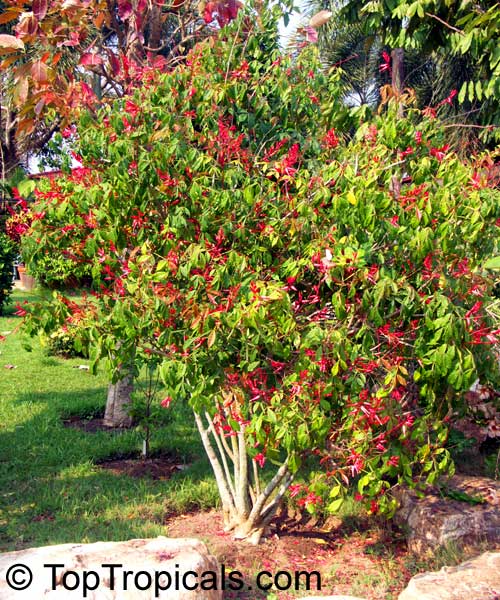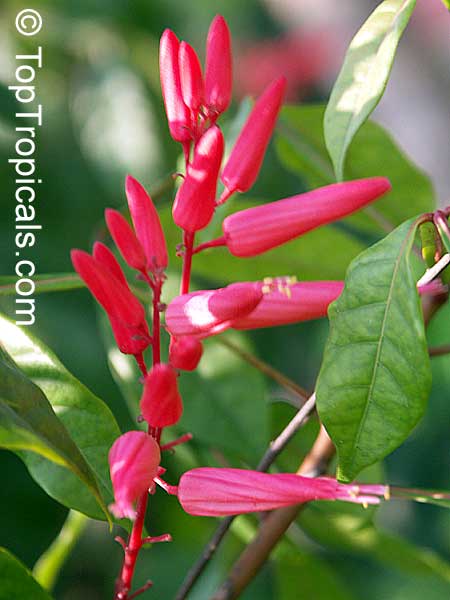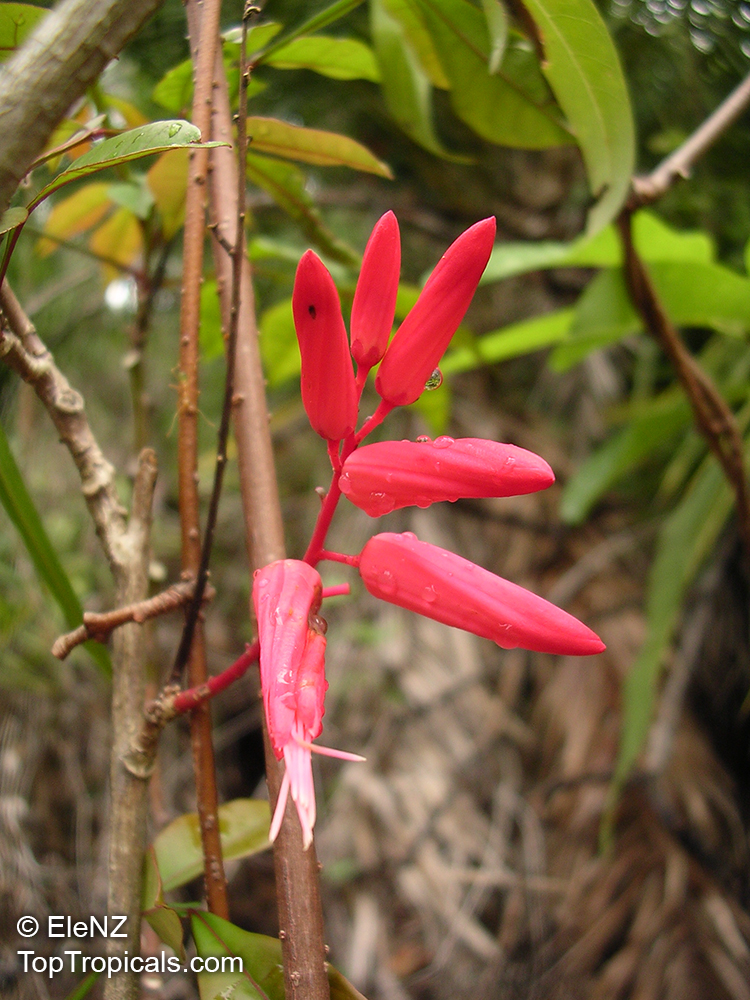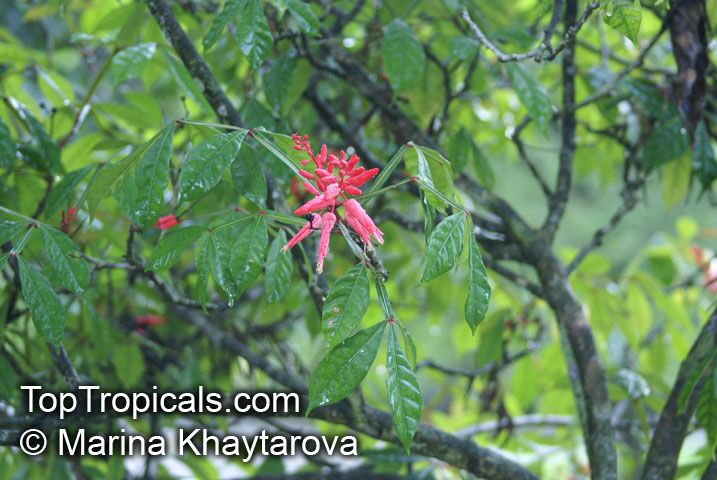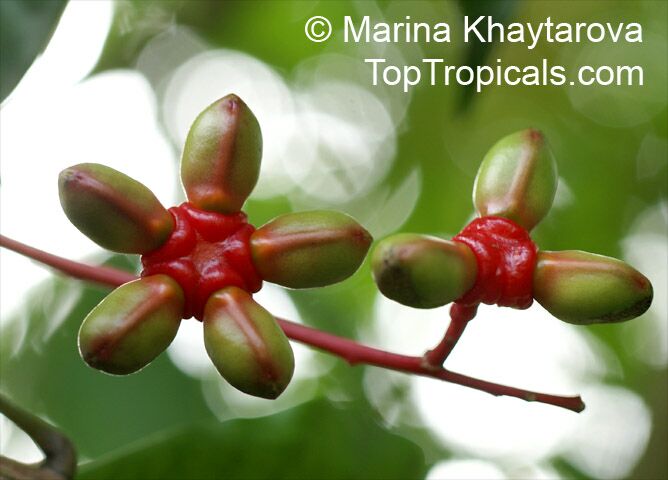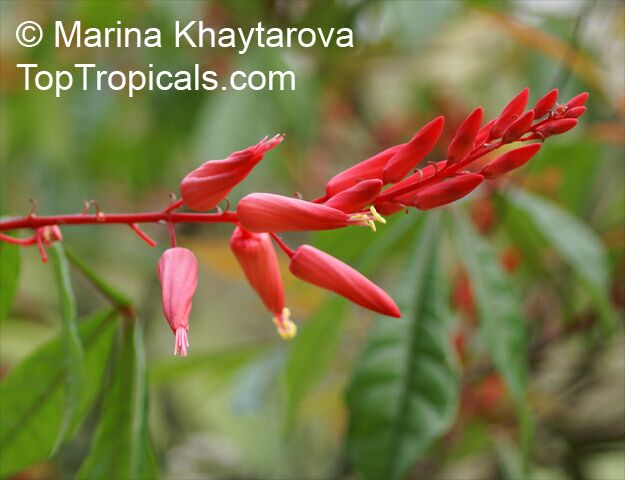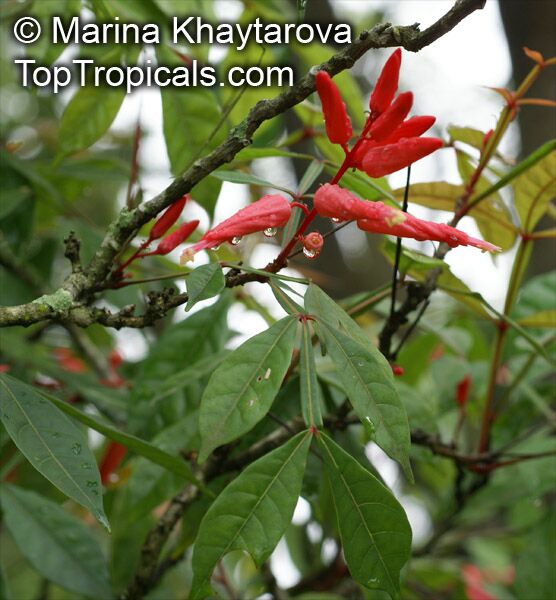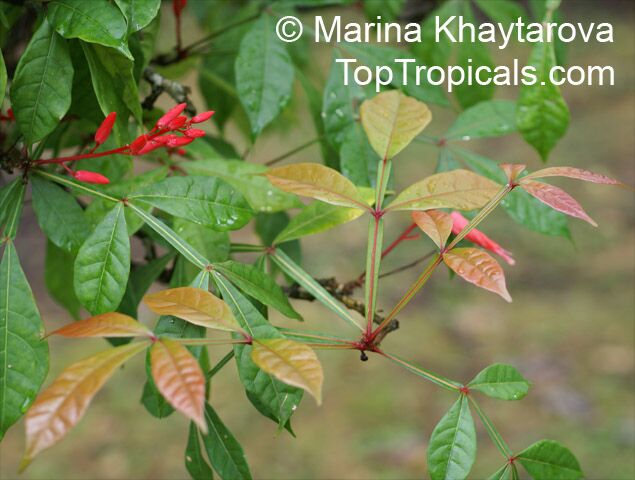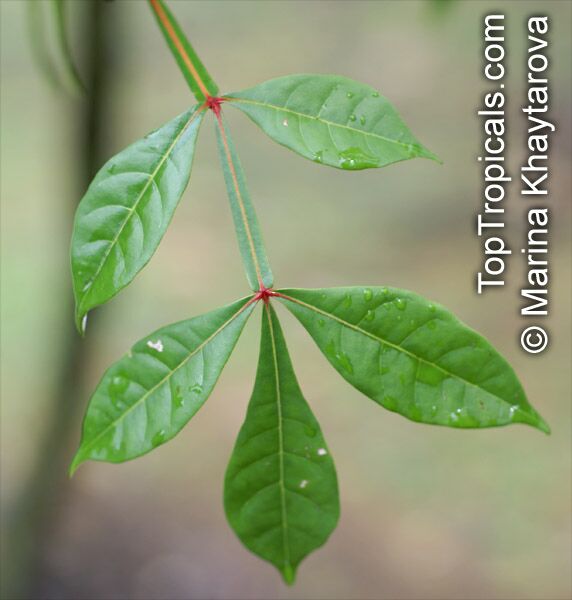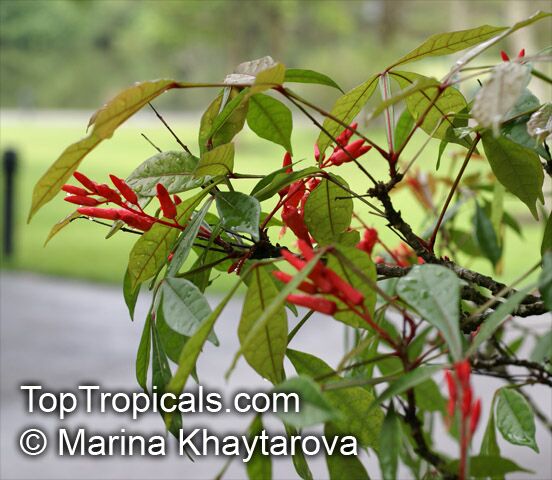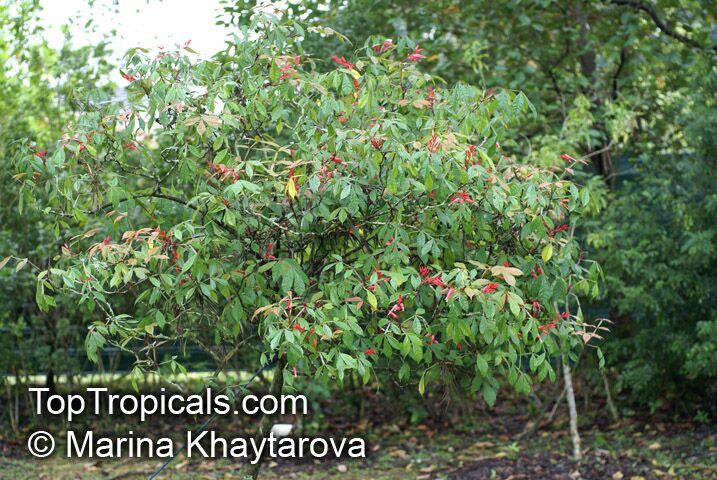Quassia amara (Amargo)
Top Tropicals Plant Encyclopedia
Botanical name: Quassia amara
Common names: Amargo, Bitter Ash, Bitterwood
Family: Simaroubaceae
Origin: South America







Amargo is a small tropical tree, growing only 2-6m in height. It is indigenous to Brazil, Peru, Venezuela, Suriname, Colombia, Argentina, and Guyana. It has beautiful red flowers and fruits that turn red as they mature.
Throughout South America, amargo is a tribal remedy for debility, digestion problems, fever, liver problems, parasites, malaria, snakebite, and back spasms, it are used to stimulate the appetite and secretion of digestive juices, as well as to expel worms and intestinal parasites. In herbal medicine in the United States and Europe, amargo is employed as a bitter tonic for stomach, gallbladder, and other digestive problems (by increasing the flow of bile, digestive juices, and saliva); as a laxative, amebicide, and insecticide; and to expel intestinal worms.

